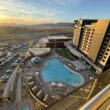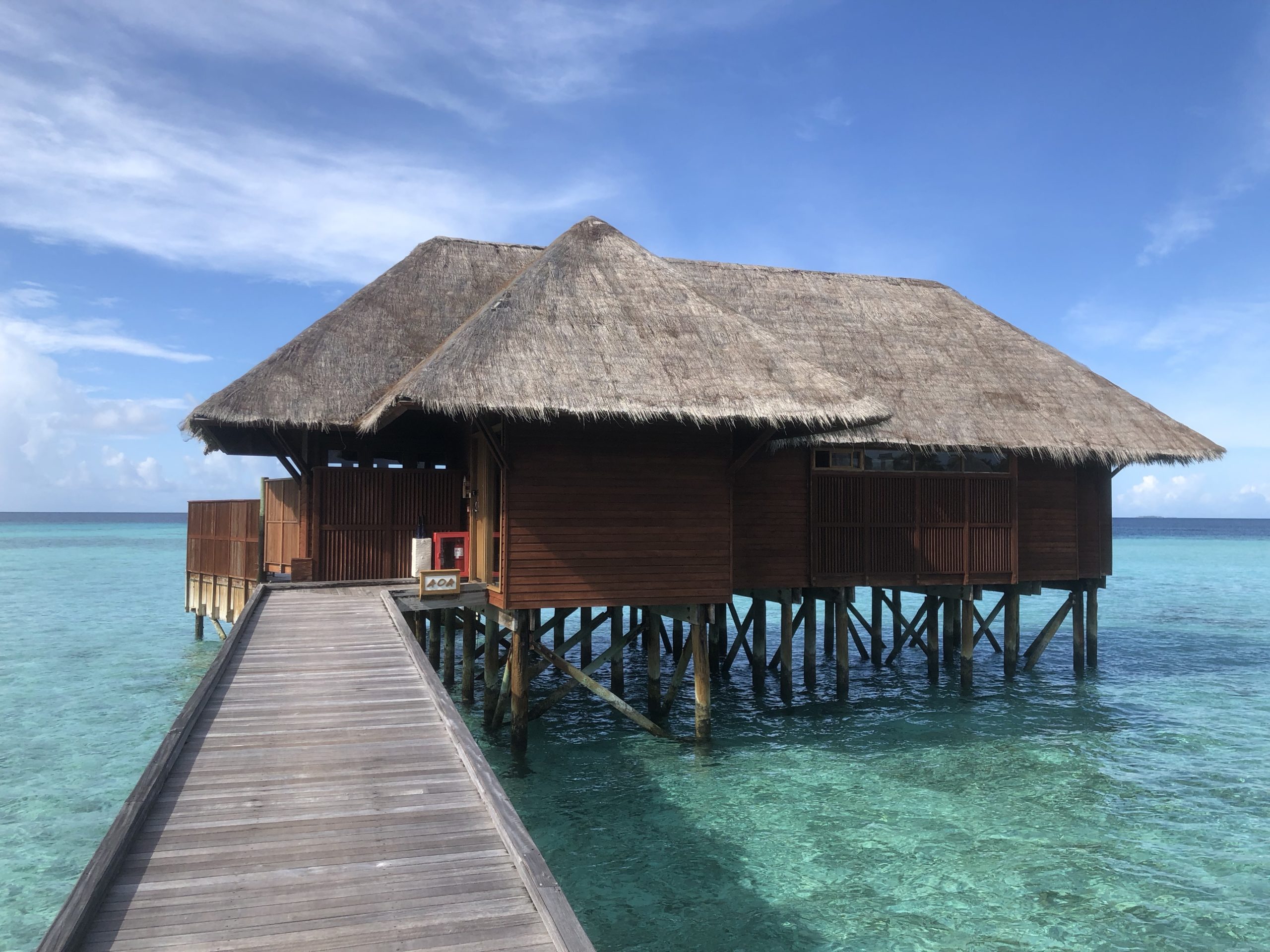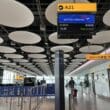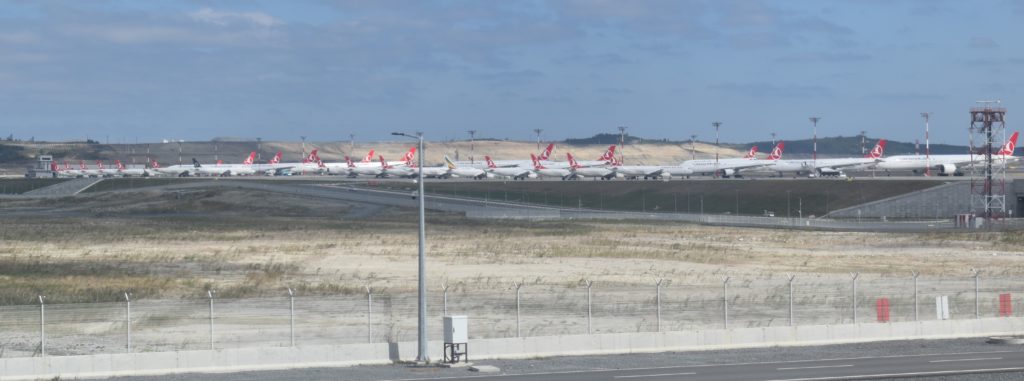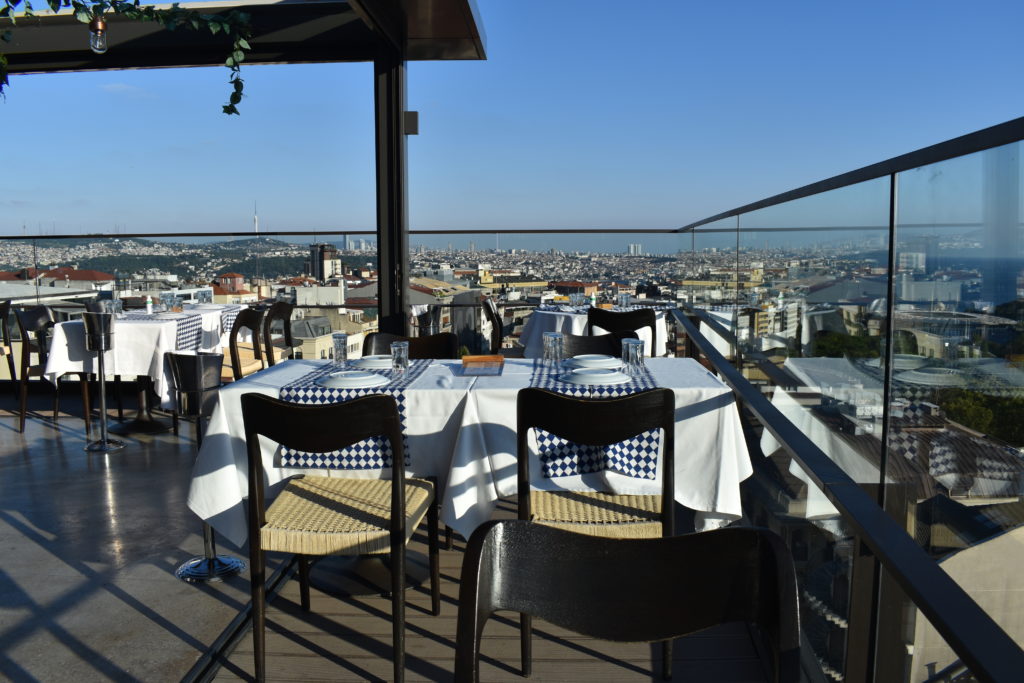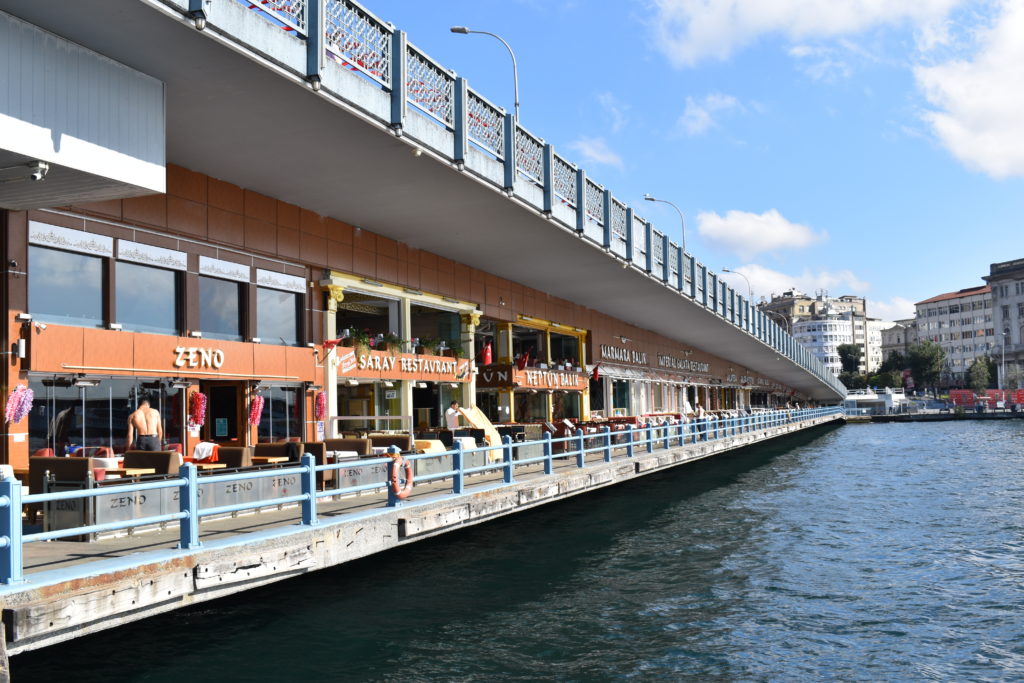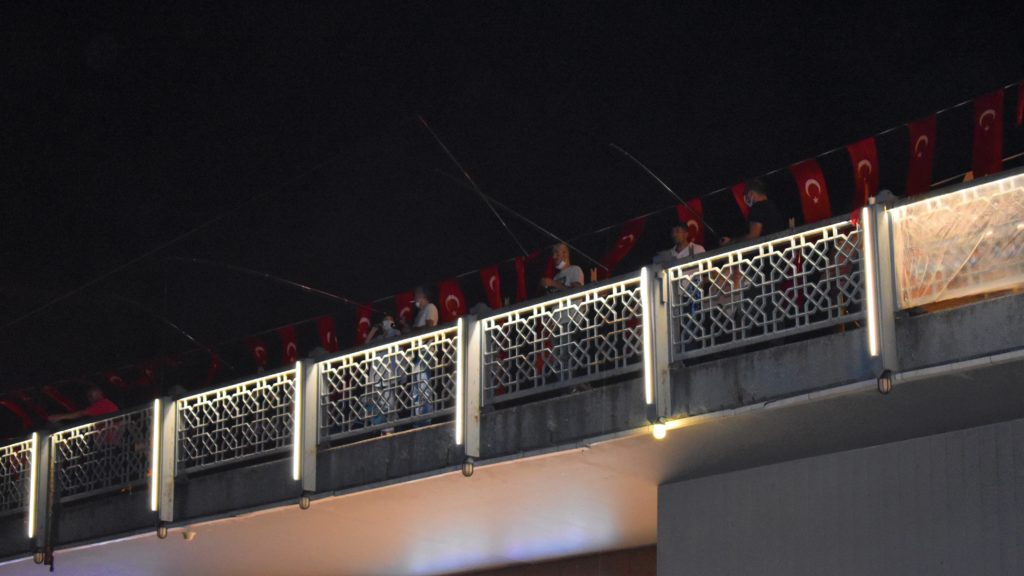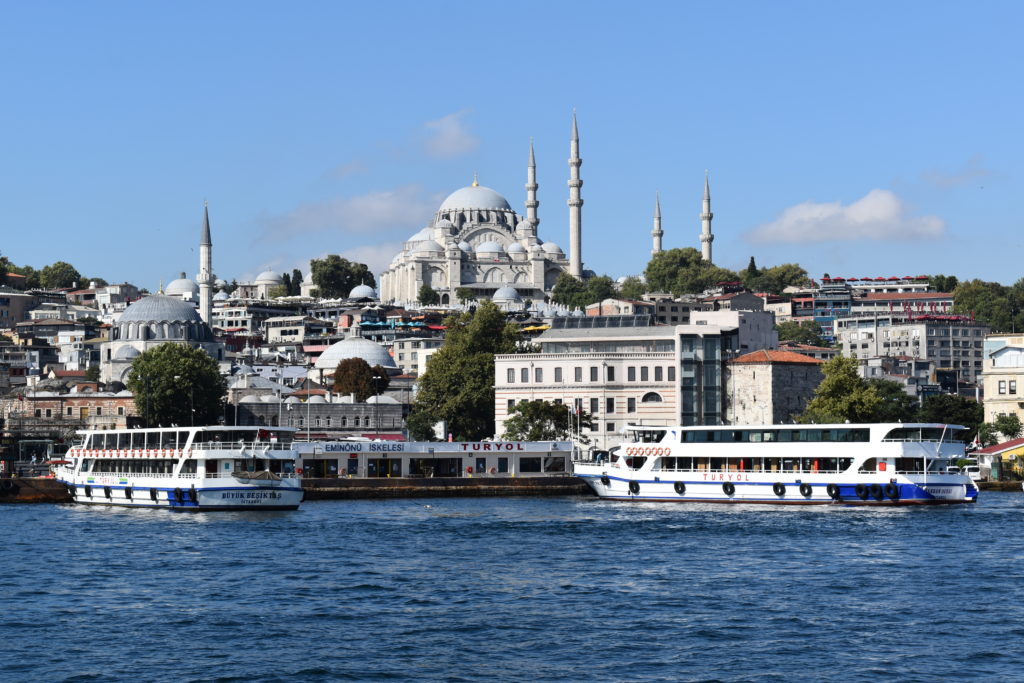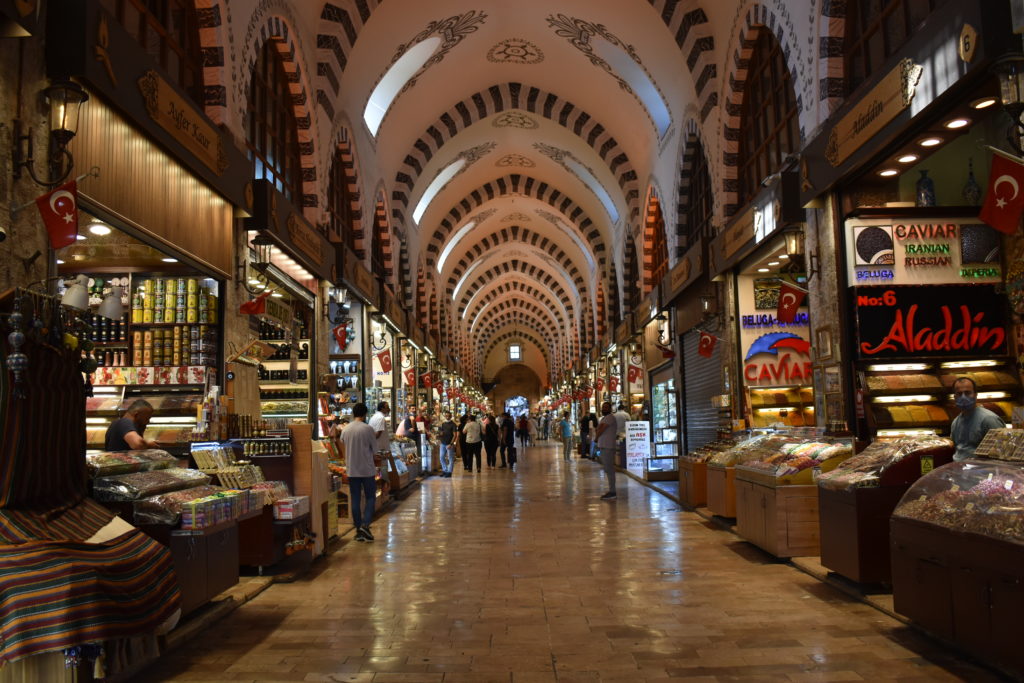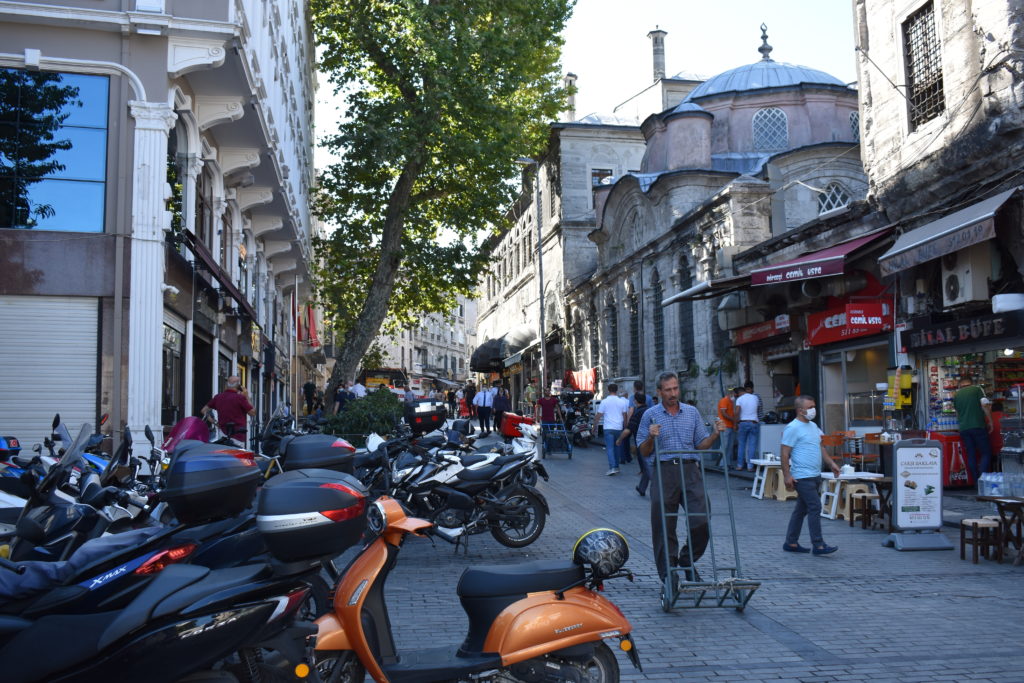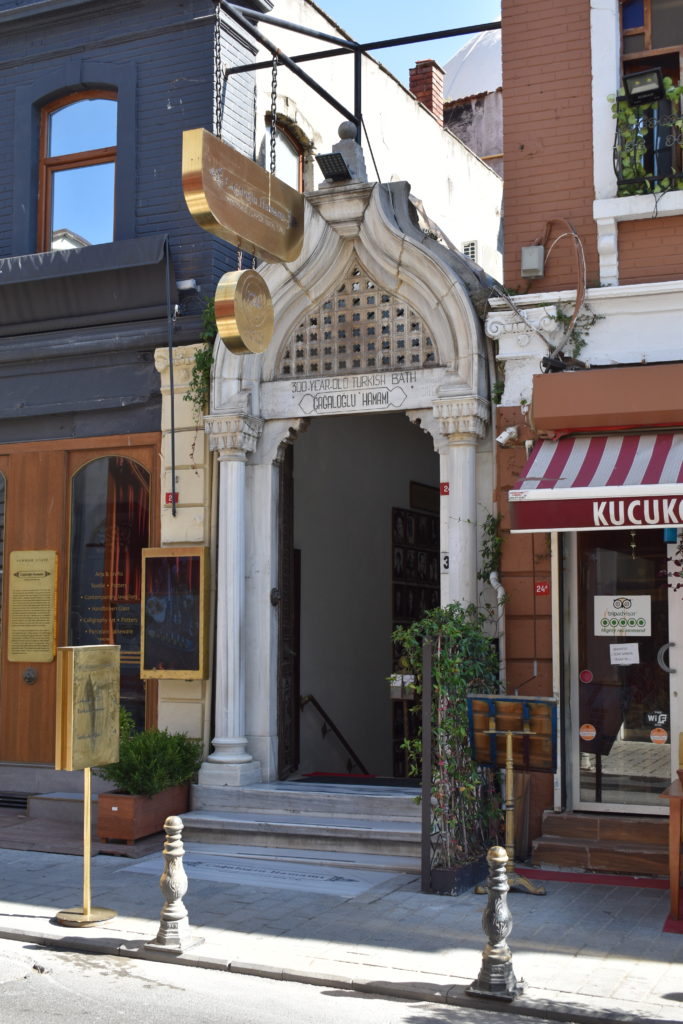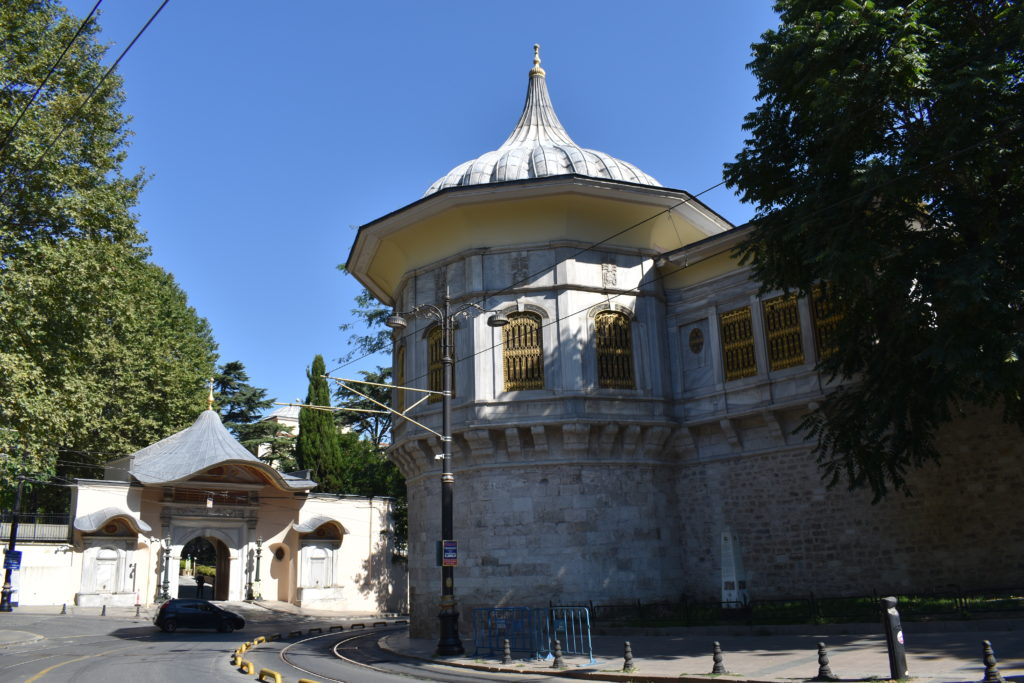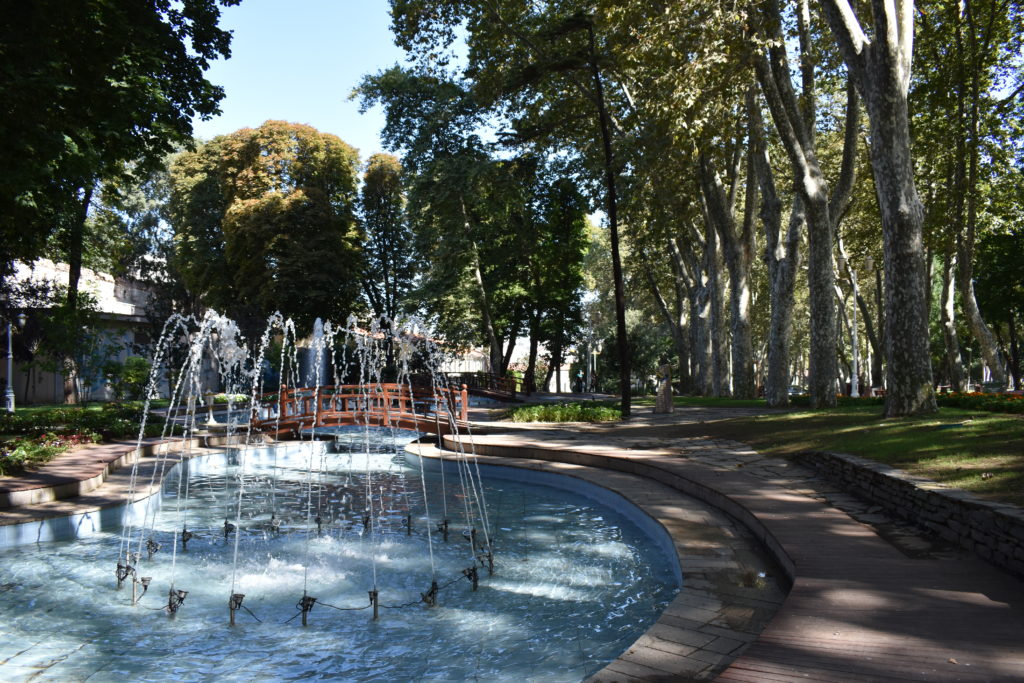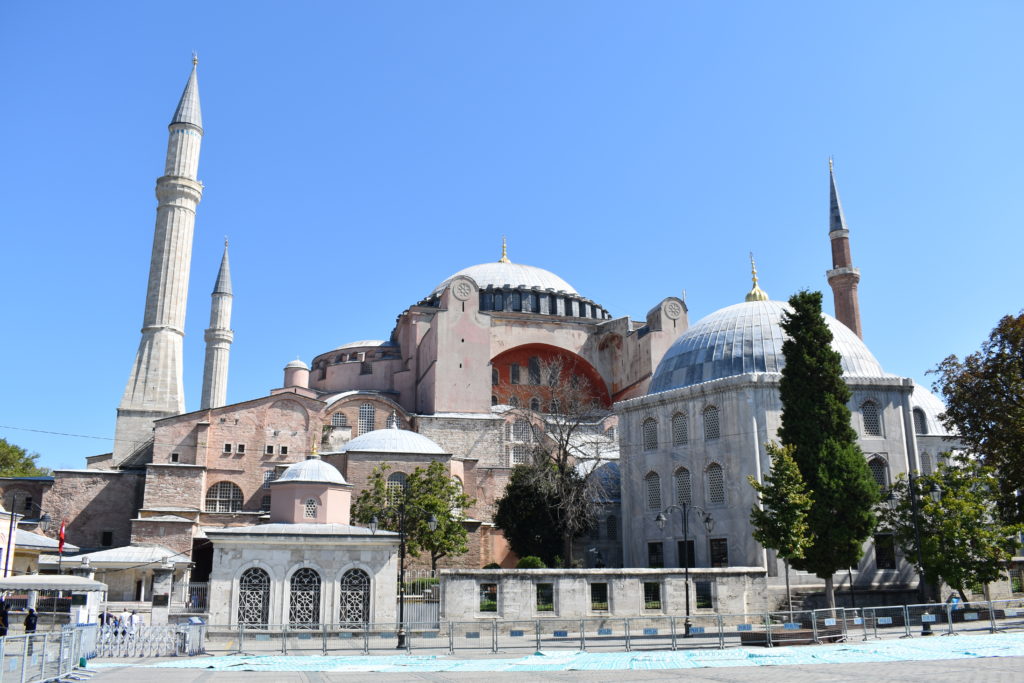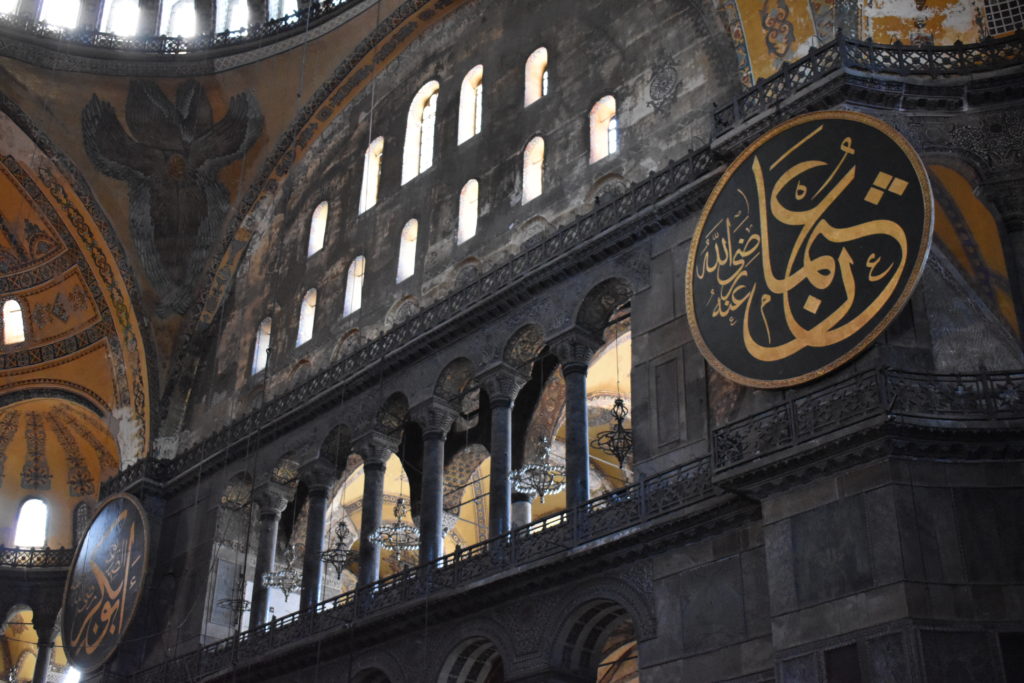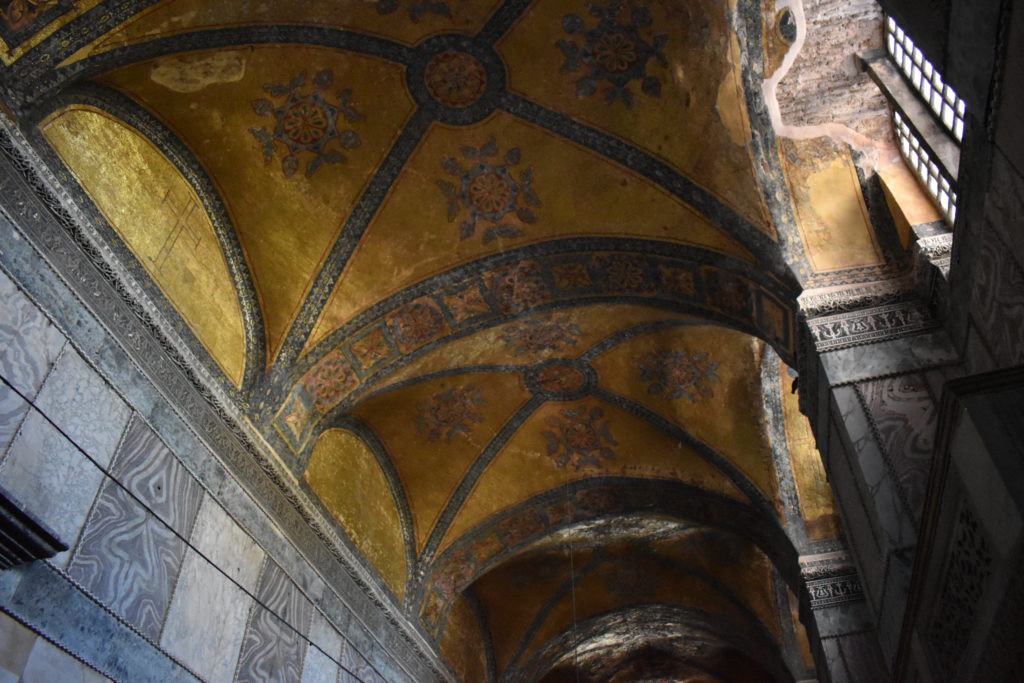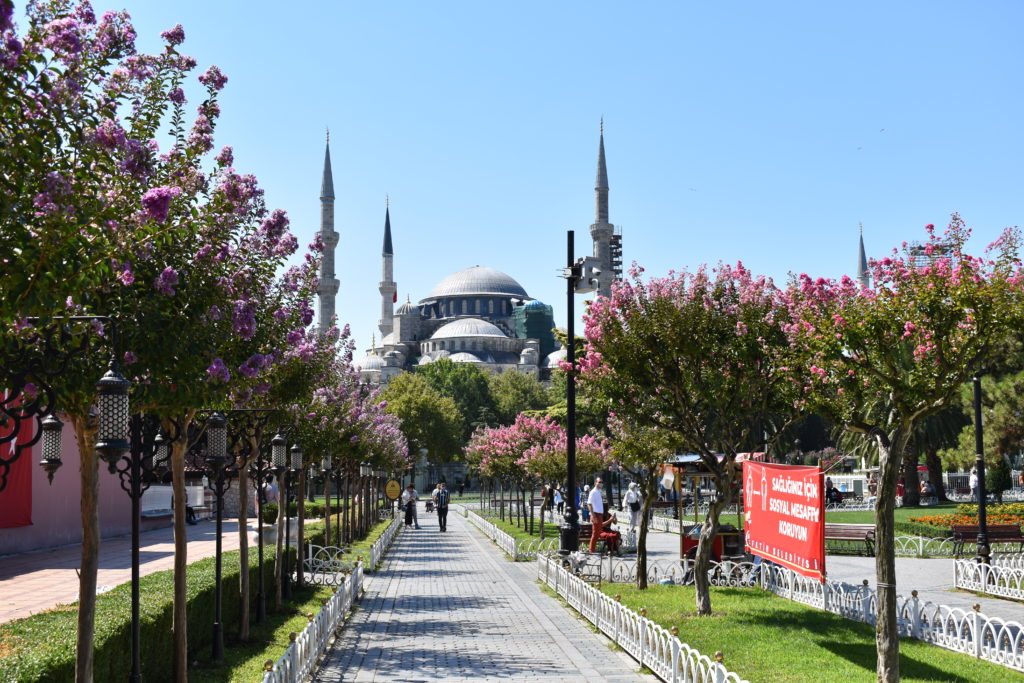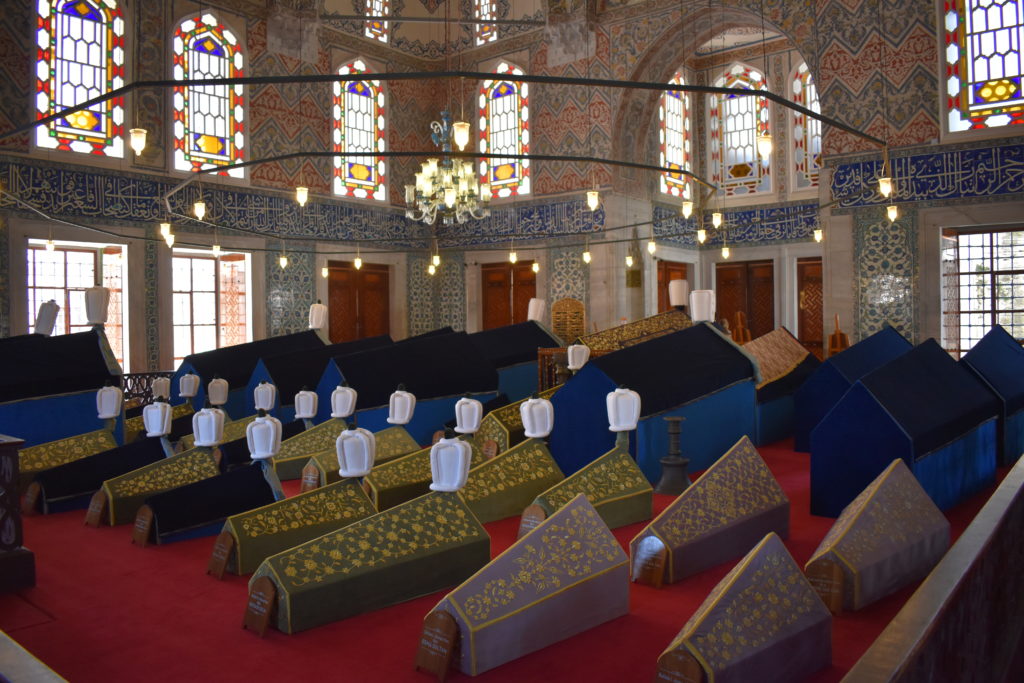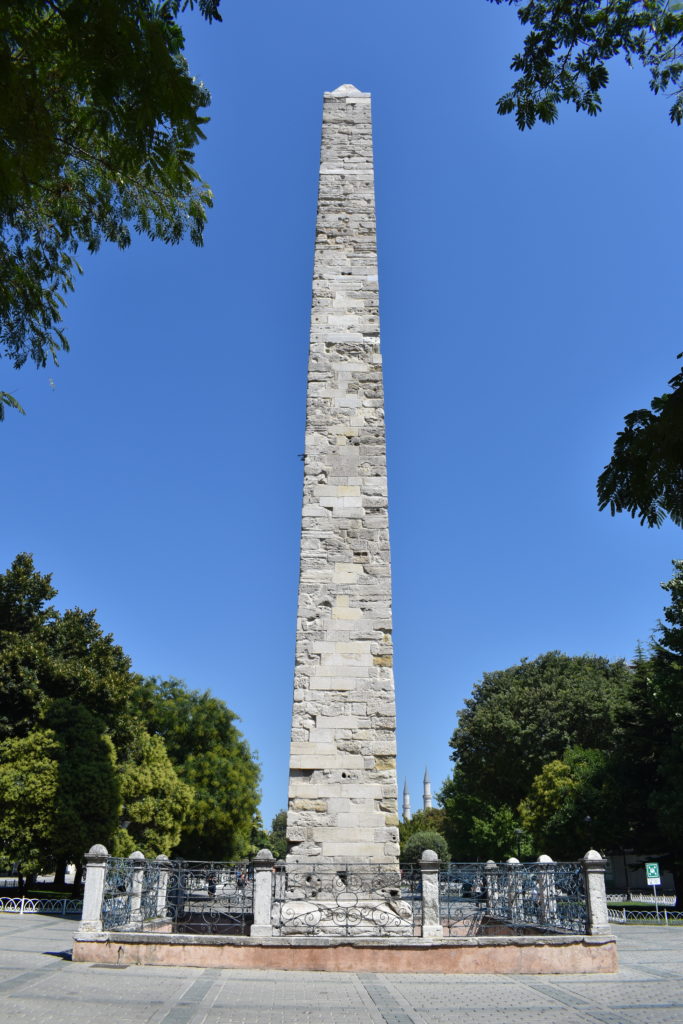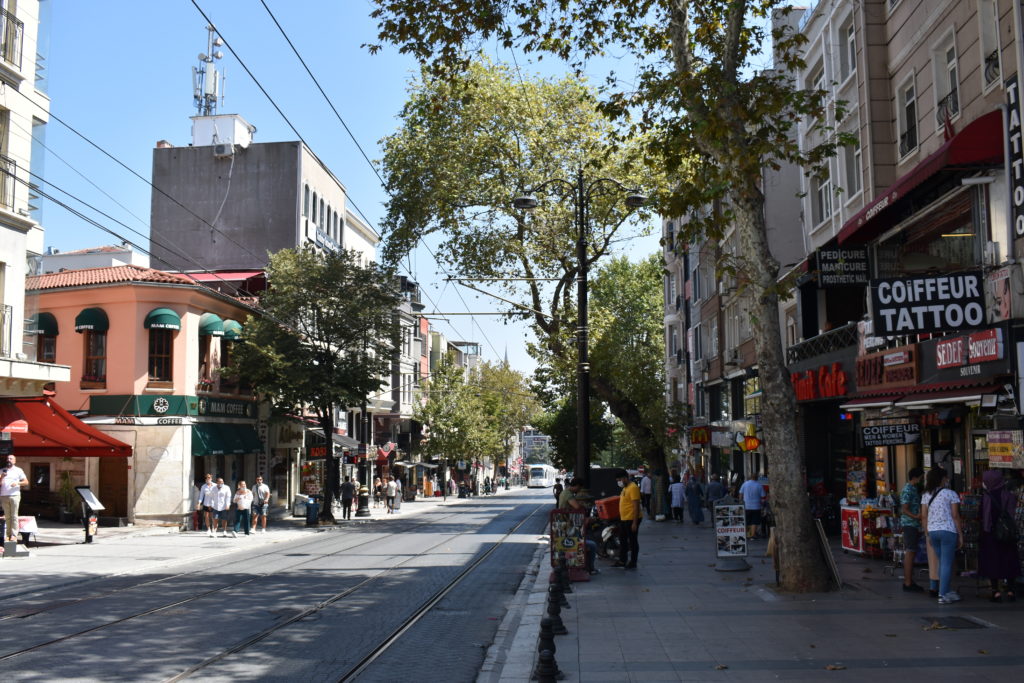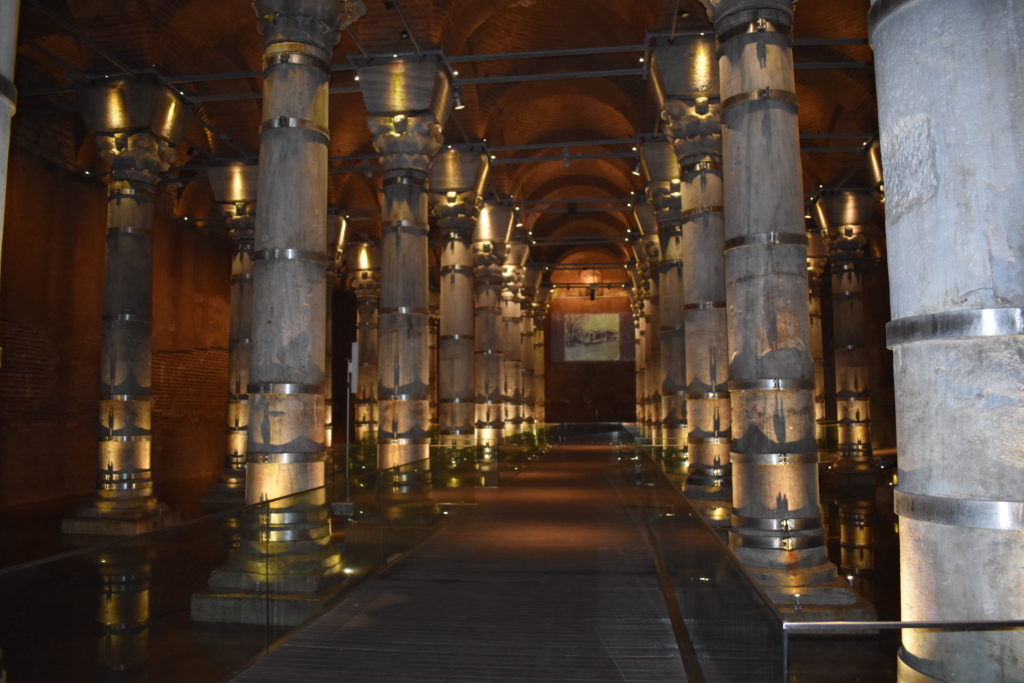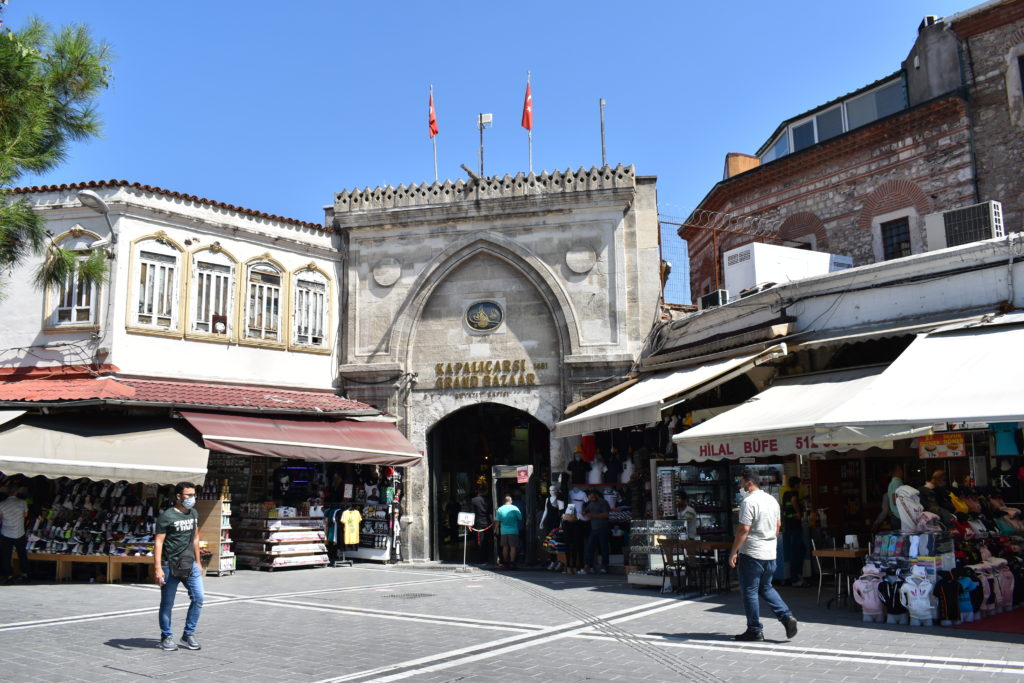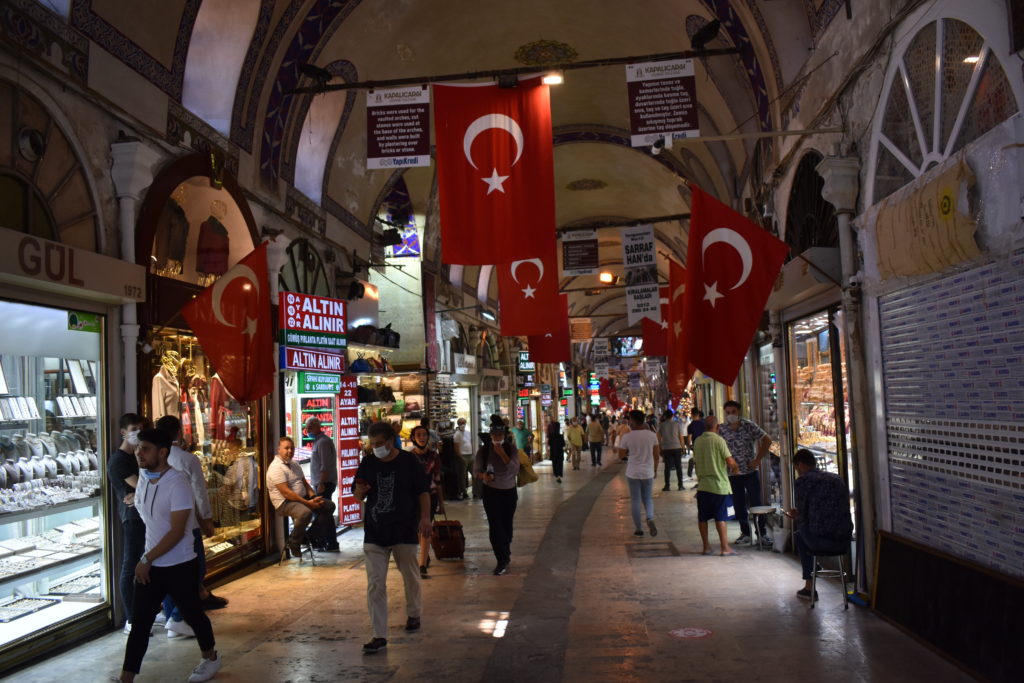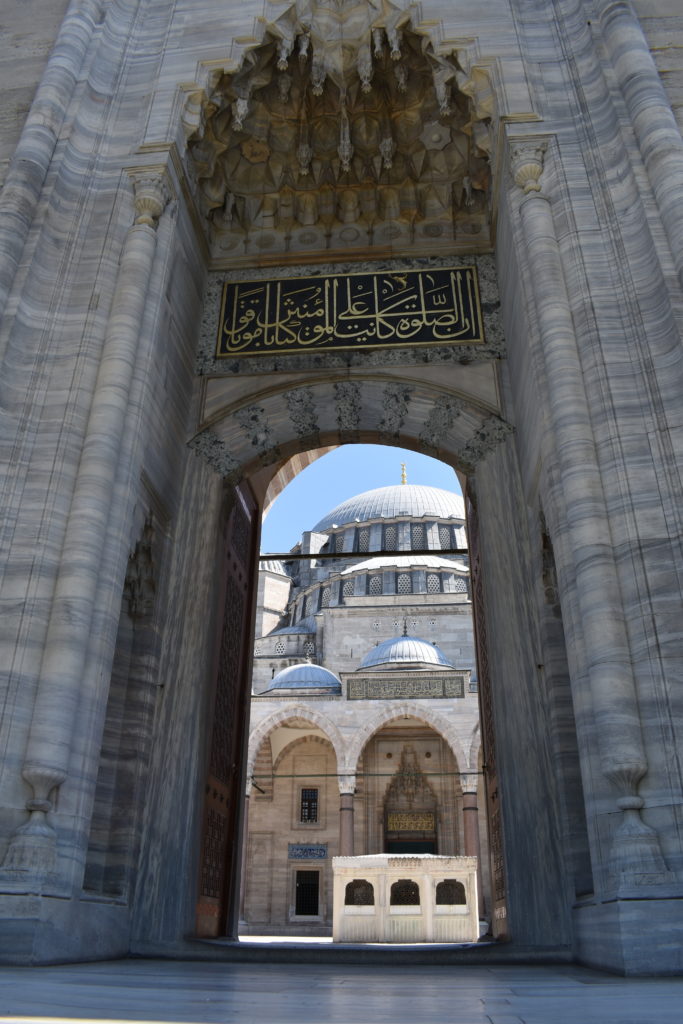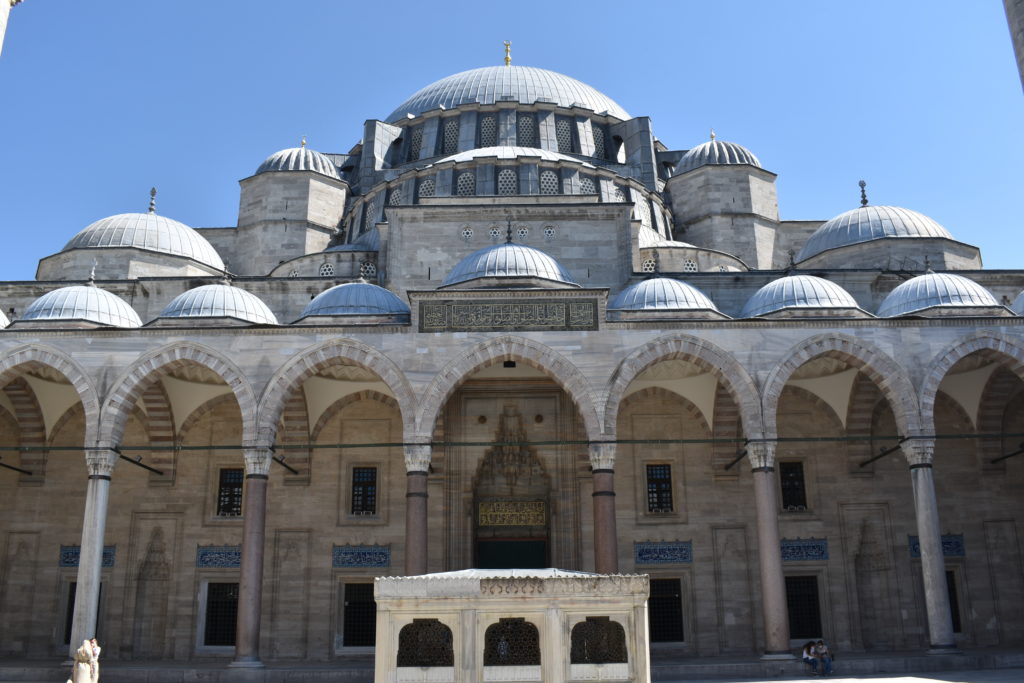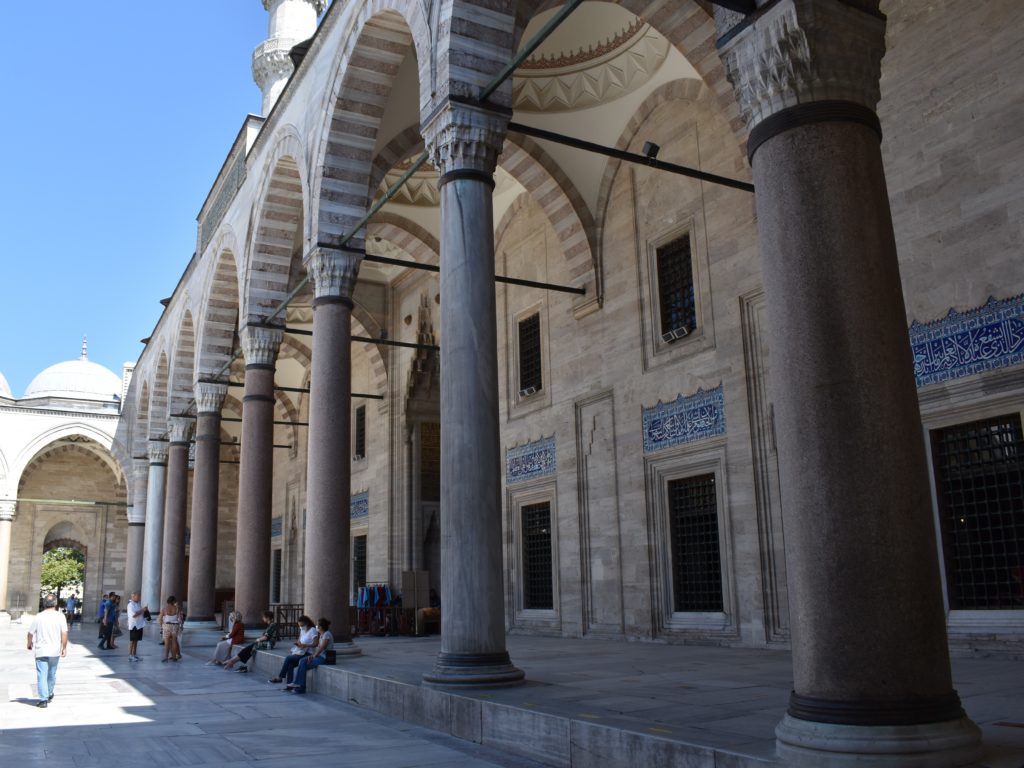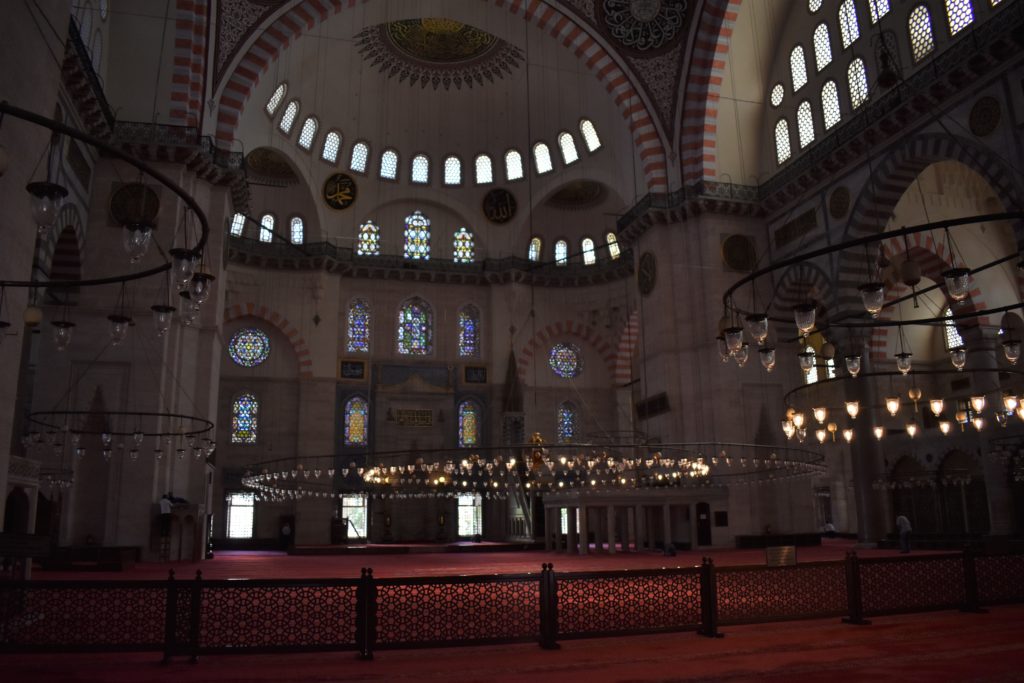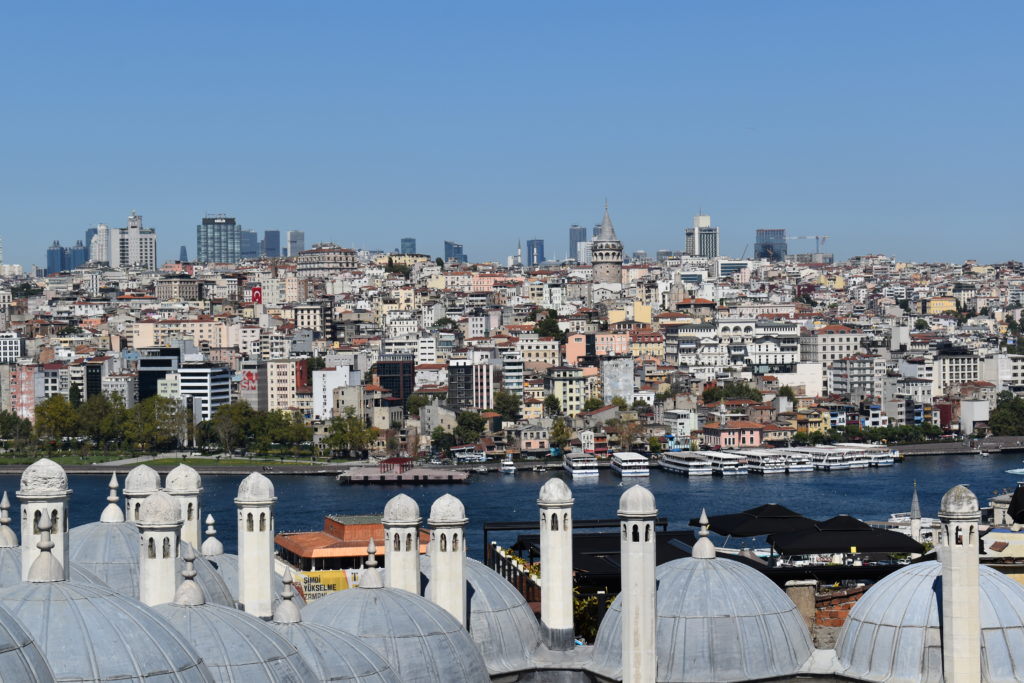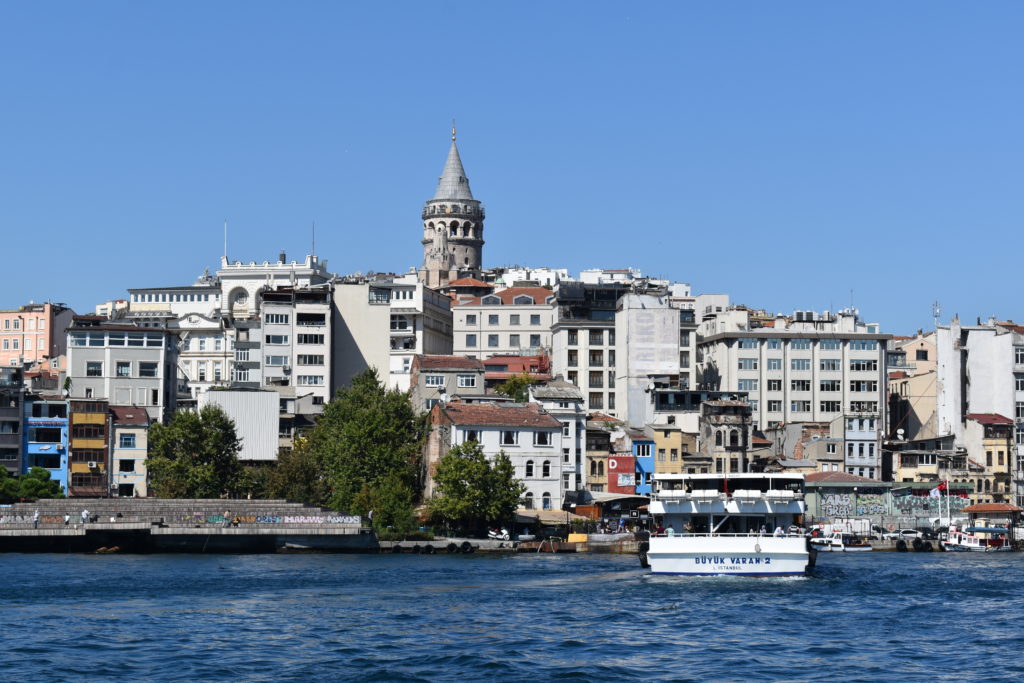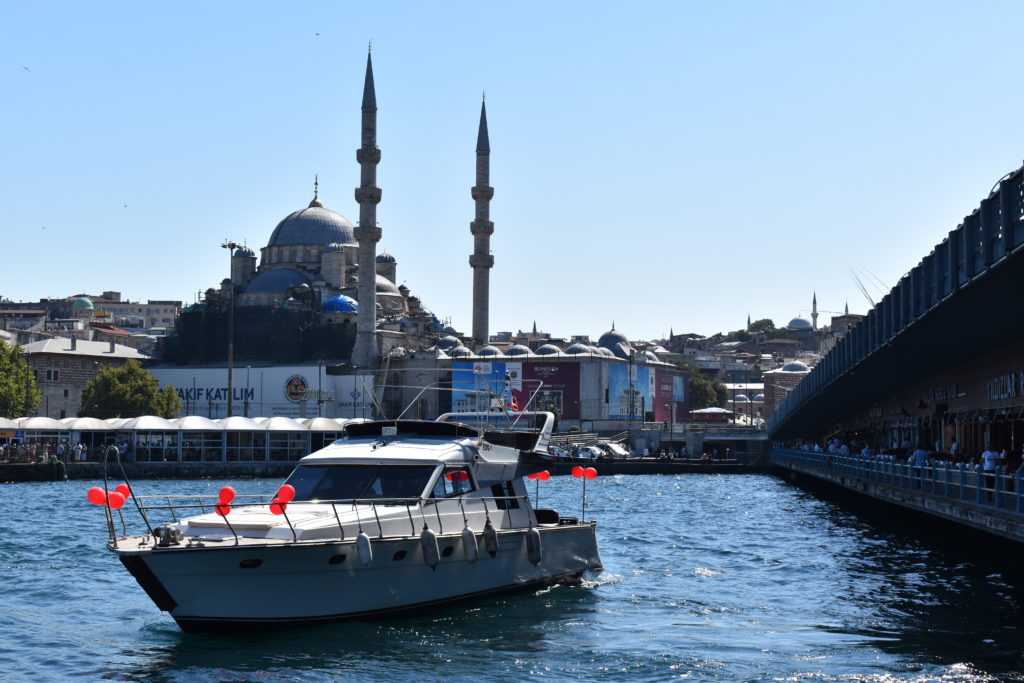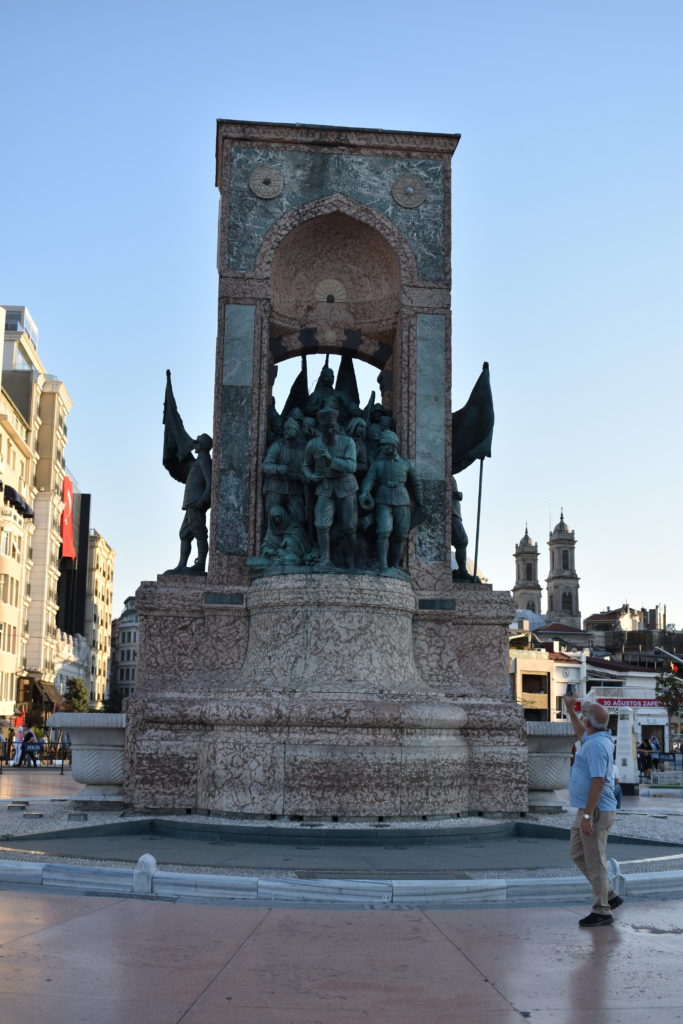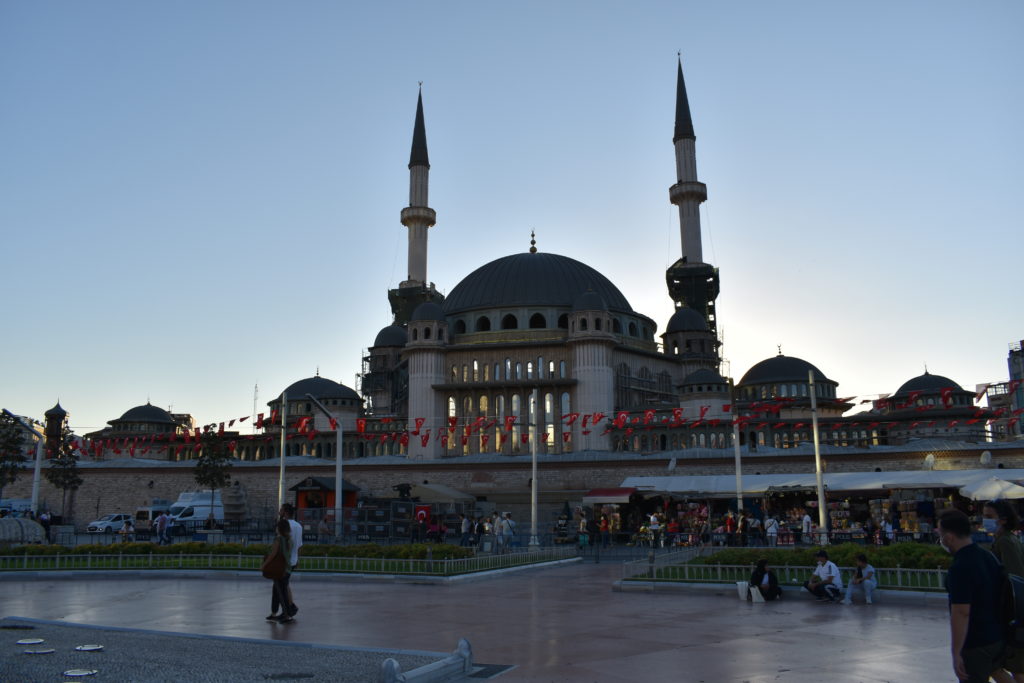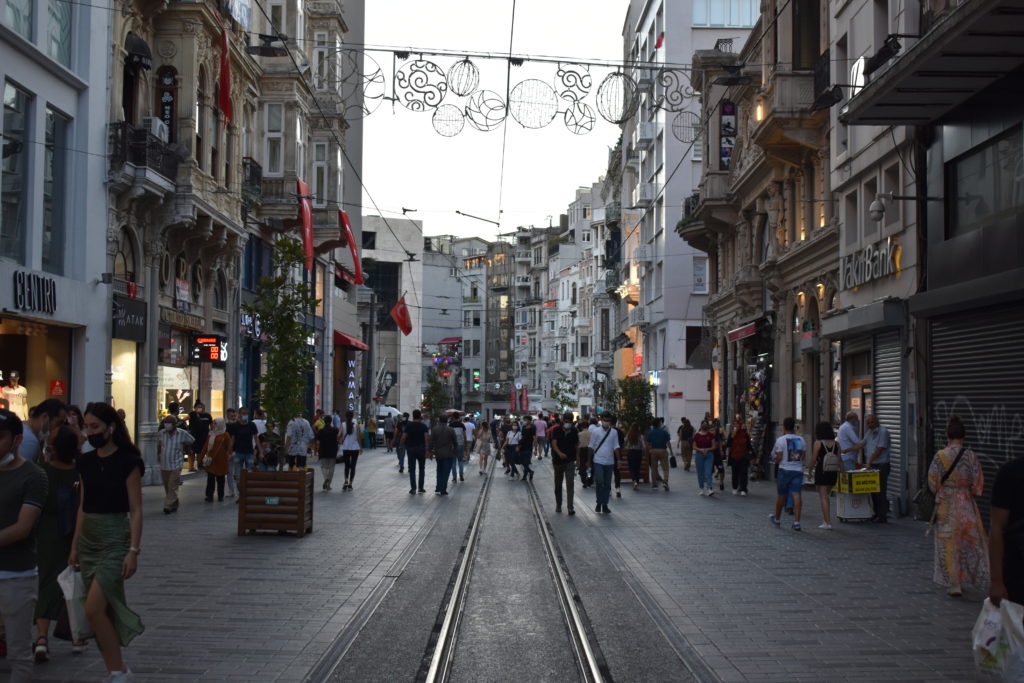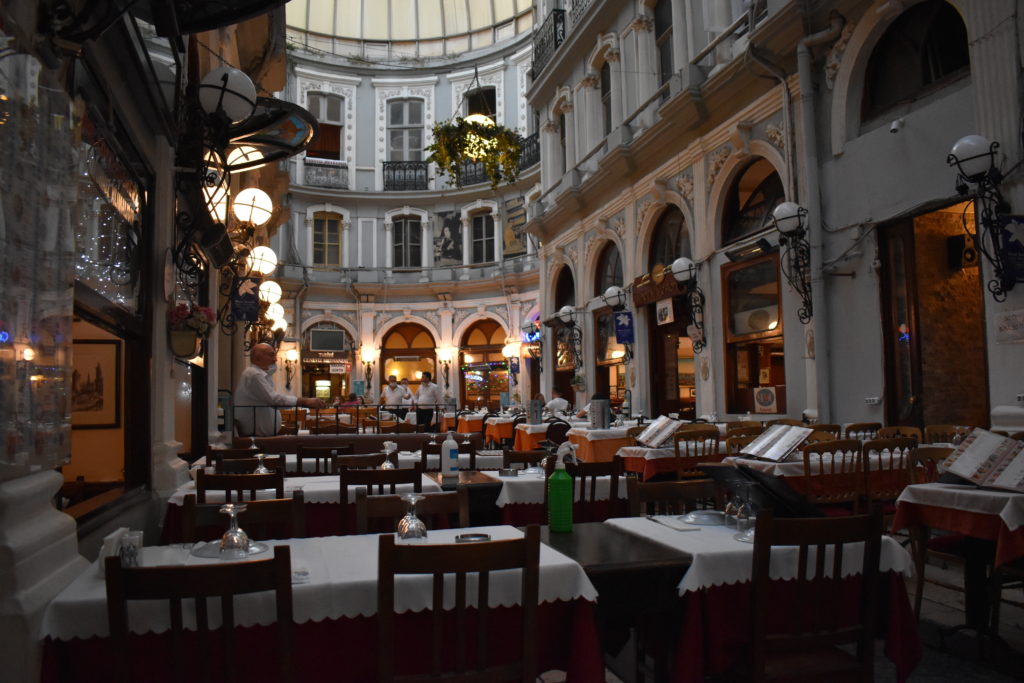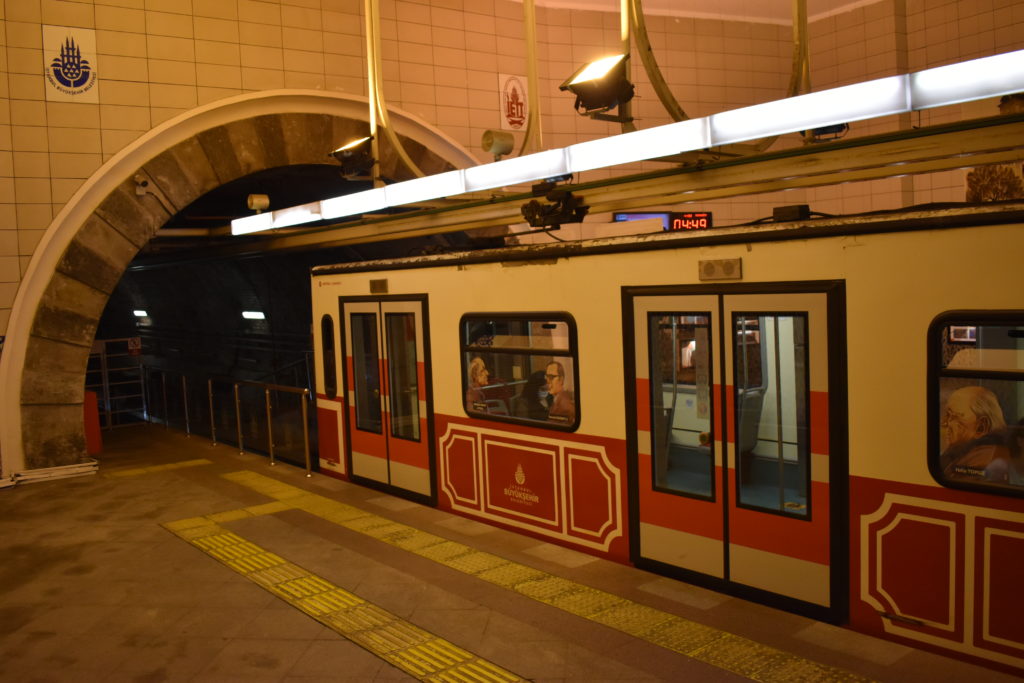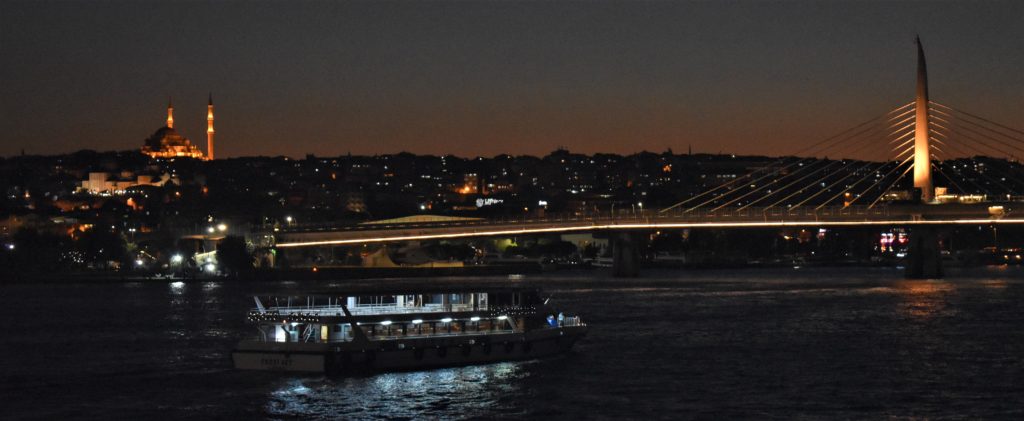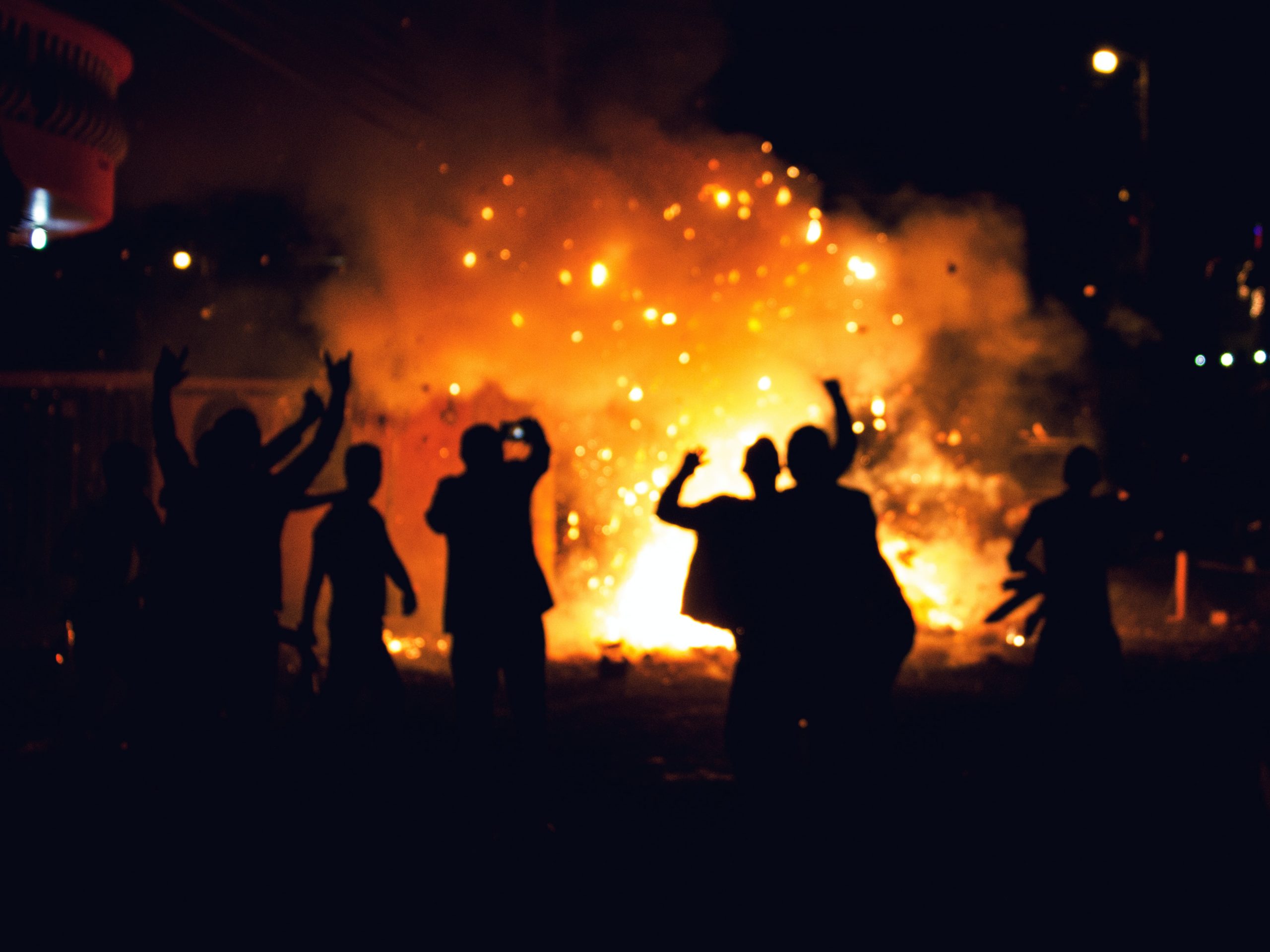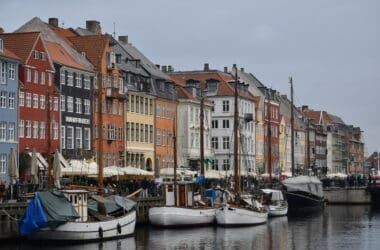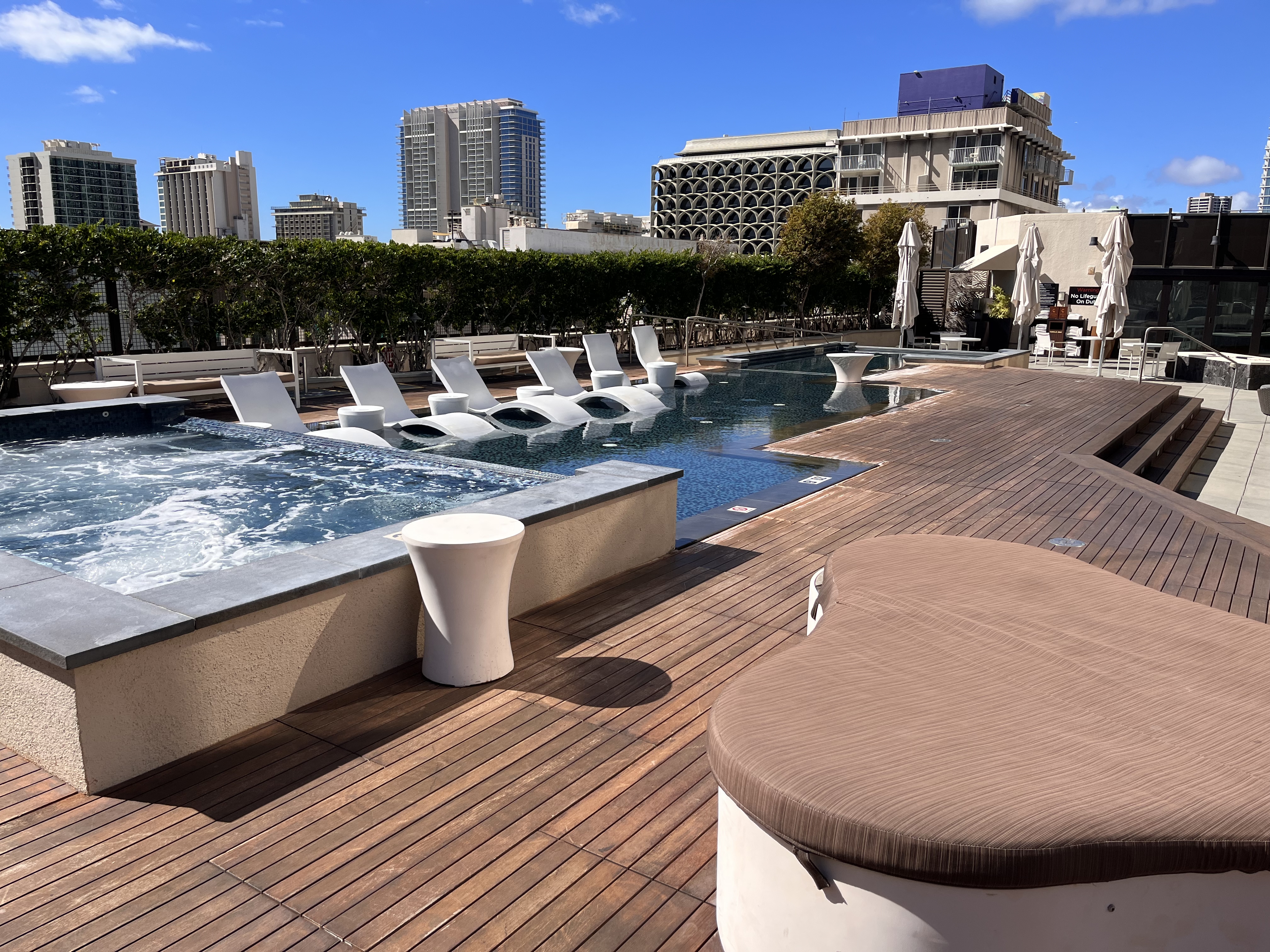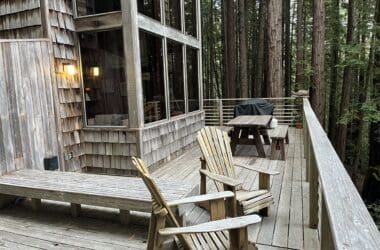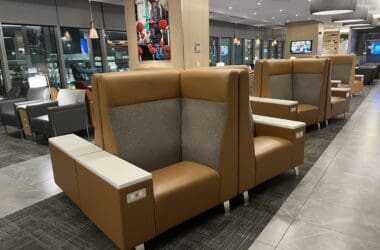I wrote a summary post of my time in Istanbul in September 2020, detailing the main sights, what I ate, how to get around, and where I stayed. This post (and subsequent two posts) detail each of my three days in the city.
The Start of a Turkish Adventure
There is only one word to describe arriving in a new country: exhilaration. Landing at the new Istanbul Airport was no exception. It had been a long journey, taking four segments and an overnight to get to Turkey from California. But I had completed an avgeek goal of flying on an Airbus A340 before the planes all (likely) are retired around the world.
Seeing the long line of parked Turkish Airlines planes was a sad sight, a product of COVID-19 still affecting so much of the globe. Turkey may be open for tourism, but so many other places still aren’t. The flag carrier flies to more countries in the world than any other, aided by Istanbul’s strategic location that spans continents.
Navigating the airport was easy, and soon I was outside hailing a taxi. The new Havalimani is quite a ways from Istanbul itself and there is no light rail service between the city and the airport. Hopefully this is developed at a later point.
Taxis are cheap, though. I paid less than $30 USD for my 45-minute ride from Havailmani to my hotel in the Maçka neighborhood, the Nish Palas. Dinner at the terrace restaurant with views of the Bosporus after a refreshing shower was the perfect end to the long trek.
It would have been easy to simply head back down to my room and sleep. But with barely 36 hours to enjoy Turkey’s largest city, I pushed through the exhaustion and headed out to explore. I walked to Taksim Square, arriving as the light was fading from the sky. There were plenty of people about, and almost none were wearing masks. Several boys were stripped down to their underwear, playing in the fountains nearby. In that moment COVID-19 seemed to barely register and the world was nearly normal.
I walked the length of Istiklal Caddesi, a pedestrianized shopping street that stretches from Taksim Square to the Galata Tower. It took far longer than I anticipated, but it kept me engaged and alert. A hailed a taxi to take me back to the hotel and ended my day. I’d wake far too early for my first full day, thanks to the 10-hour time difference between Turkey and California.
Beginning at the Galata Bridge
After a lovely breakfast and a brief stop to drop my bag at the next hotel, I headed out to explore Istanbul. The decades-old guidebook I bought prior to the trip suggested that a visit to Istanbul should start at the Galata Bridge. Now that I’ve been to Istanbul, I don’t disagree. The Galata Bridge crosses the Golden Horn, a small arm of water stretching away from the Bosporus Strait and a central feature of the city. Istanbul’s location along both the narrow land connection between Asia and Europe and the Bosporus, the narrow waterway connecting the Black Sea to the Sea of Marmara, has made it an invaluable strategic point throughout history.
The Galata Bridge has an upper roadway and a lower level walkway. Underneath the bridge deck are numerous restaurants with open-air seating and views of the water. It is an excellent place to stop and grab a Turkish coffee or dessert. If you’re at the bridge in the evening, you’ll be joined by numerous locals fishing off the bridge.
From the Galata Bridge I proceeded into the old city. Without any tall buildings, the skyline of Istanbul does not really stand out. The main reference points are the minarets from various mosques. These can help keep you oriented. The mosque closest to the Galata Bridge as you head south into the city is the Yeni Camii, the New Mosque. New is relative. The mosque is a few hundred years old. Up the hill you’ll see the Suleymaniye Mosque, which is by far my favorite of the few I visited.
Near the New Mosque is the Mısır Çarşısı, the Egyptian Spice Market. It’s worth a walkthrough, if just to enjoy the beautiful hallways and the savory fragrances. Foodstuffs are not my primary choice of souvenir, although I did later buy some Turkish delight to take home.
I wandered the streets for most of the next hour, slowly making made my way toward Sultanahmet. I could have taken the tram, but that would have been far less fun. There is no better way to explore a new city than on foot. I didn’t care if I made a wrong turn or needed to backtrack. It’s a treat simply being in a new place. Istanbulites would chat in the street with a cigarette in their mouth and a mask around their neck, the token COVID-19 precautions being taken at the time. Shops were opening up for the day, and I had to dodge scooters and deliverymen at times. Simply seeing life as it is in a new place is one of the reasons I love to travel.
Eventually I made my way toward the Turkish bath I planned to visit the following day: the Cağaloğlu Hamam. The marble hammam has been visited by quite a few celebrities and was a lovely experience. More on that in a future post.
My walk ended at the Topkapı Müzesi Alay Köşkü, a museum-library (of sorts) near Topkapi Palace. The sultans used to watch processions of janissaries and other soldiers from the comfort of this kiosk. It is a cool little building to see, if you have the time. Make sure you head downstairs into the lower part of the interior.
Nearby you’ll find Gülhane Park and the Istanbul Archaeological Museums. Given the short duration of my visit, I skipped the archaeological museum, although I would have loved to visit. It’ll have to wait until next time.
Sultanahmet and the Heart of the City
From the Alay Köşkü you’re only a short walk away from the Hagia Sophia. It is here that you’ll begin to encounter friendly young Turks who will try to draw you away to a nearby carpet shop. I may have been a prime target as a solo male tourist, but I was accosted a total of seven times throughout the hours I spent near Sultanahmet. It is the tourist center. My research had warned me about men who would invite you to a bar and try to scam you out of a significant amount of money. I’d read nothing about carpet shop scams.
The conversations were pretty much the same each time. He’d ask where I was from, why I was in Turkey, and would try to quickly build rapport. I saw no harm in going along the first couple times. In each case the shopkeeper offered me a cup of hot apple tea and invited me to sit while they showed me several carpets. I tried to make clear at the outset that I was not interested, but they were persistent. On my last encounter, I did end up buying a table runner for ₺300. The shopkeeper in this case was the kindest and most attentive, and we enjoyed a good conversation for a solid 15 minutes.
After the second carpet shop experience, I made real my way to the security area that encompasses the Hagia Sophia, Blue Mosque and adjoining park. A quick bag search, and you’re through. And there is was, a sight I’ve long wanted to see.
Constructed in the sixth century, the Hagia Sophia is truly remarkable. It held the title as the world’s largest cathedral for nearly a millennia and was the seat of the Eastern Orthodox church for essentially as long.
When the Ottomans conquered Istanbul, they converted the Hagia Sophia into a mosque. The minarets were added after this point. It remained a mosque until 1935 when the Turkish president converted the structure into a museum. However, President Erdoğan reverted the Hagia Sophia to an active mosque once more during summer 2020. You can still visit, but I would avoid Muslim prayer times.
It’s awe inspiring to stand inside a 1,500-year-old building. People walked these halls in the 500s. Some of the structure and interior have obviously been restored over the years, but you can certainly observe the age and wear. I lingered for quite a while.
But there was still plenty more to see. Heading across the park, I made my way to the Blue Mosque next. Unfortunately, my visit was poorly timed, thrown off by my time spent in the carpet shops. It had just closed to tourists in advance of prayer. I would return the next day to visit the interior. The experience at the Blue Mosque actually ended up being a disappointment, as it in under major restoration. It’s far more appealing from the outside.
Near the Blue Mosque and Hagia Sophia are a number of other interesting historical sights. The tomb of the sultan who commissioned the Blue Mosque is worth a peek.
You’ll also find a pair of obelisks in the square to the southwest. One is transplanted from Egypt, while the other is a monument to the ancient Roman hippodrome that used to exist at the same location.
I headed back out of the secure area to Sultanhamet. With few COVID-19 restrictions, there were plenty of shops open. I’d guess that the city is less busy than usual, but that’s just an assumption from the pandemic. I saw quite a few Russian tourists, who are common visitors to Turkey. Russian was typically the first language in which I was greeted. Each time I’d pretend I didn’t understand как дела, брат.
Although I was headed to the Grand Bazaar, I made one quick detour. There are at least two ancient cisterns previously used in the city that you can tour. Water was transported in via aqueduct and stored here during Byzantine times. Once the Ottomans took the city, these were phased out, as Muslims prefer running water for washing and drinking. The cisterns are really worth seeing.
The Grand Bazaar and Süleymaniye Mosque
Following the tram line west from Sultanhamet you’ll come to the entrance to the Grand Bazaar. The bazaar is quite old, with a history stretching back centuries. The network of covered “streets” houses hundreds of shops selling all sorts of wares. If shopping is your thing, you could lose several hours here. The bazaar is massive.
I enjoyed the Grand Bazaar, but my visit was definitely abbreviated. I’d already purchased a few souvenirs near the Sultanhamet tram station and had no plans to buy anything else. I did enjoy some window shopping.
I was more than a few hours into the day at this point, and it was time for lunch. For just ₺11 (less than $1.50 USD) I grabbed a sandwich and a bottle of water from a shop near the bazaar. In contrast, I’d spent nearly ₺200 on dinner the previous evening. I made my way to the Süleymaniye Mosque and sat on a lawn under a tree, near others doing the same.
The mosque itself was my next stop. Süleymaniye Mosque sits on the top of a hill with beautiful views of the Golden Horn and the city all around. The architecture is exquisite. Built in the 1550s by the Ottomans, the interior and exterior should be at the top of your list of sights to see. It is hands-down my favorite of those I walked by and/or entered during my time in Istanbul.
The view of the Golden Horn from the mosque is excellent. The domes in the foreground of the mosque complex that now function as a university. You can see the more modern section of Istanbul in the background, with the ancient Galata Tower rising tall just across the water.
I’d been on my feet for hours at this point, so I decided to head back to my hotel for some rest. My walk took me down the hill and across the Galata Bridge once more to the tram station, which I took a couple stops to get closer to Maçka. It was still a good distance to the hotel.
Evening Along Istiklal Caddesi
Rest turned into a nap, some time in the sauna, and a shower in my lovely room at the Park Hyatt. Refreshed, I headed out again in the evening to explore Taksim Square and Istiklal Caddesi for a second time, a little less tired this time around.
The monument in Taksim Square commemorates the founding of the Republic of Turkey in 1923. Turkey was ruled by the Ottomans from 1453 into the 20th century. The country as we know it today is fairly young. Facing the monument on Taksim Square is a mosque. It is quite lovely at sunset.
I headed down Istiklal Caddesi once more on my way to the Çiçek Pasajı (flower passage). It is a beautiful little alcove just off of the street. I had dinner here. It’s a nice setting, the the food was only so-so. I did enjoy the dolmas, one of my favorite Mediterranean dishes.
I followed Istiklal Caddesi to its end and continued on to Tünel, the historic funicular that runs down the hill to the Golden Horn. I love funiculars. I’ve ridden several during my travels. Istanbul’s is less steep than most I’ve been on, but it is the second-oldest underground train in the world, which is pretty cool. The run is quite short.
I ended my evening back at the Galata Bridge yet again. Istanbul is lovely at night. The Fatih Mosque and Süleymaniye Mosque are both beautifully illuminated. I hung out for a while, enjoying the city lights and the lovely late summer weather.
Wrapping Up the Day
With so much walking under my belt for the day, I took a taxi back to the hotel. They are cheap in Istanbul, costing $4-7 USD for all the trips I took. This is quite a bit more than the light rail, but still super cheap, especially considering the convenience.
My first two nights and first full day gave me a nice feel for the city. Istanbul did not disappoint. With a boat tour and hammam experience planned for the coming day, I had plenty still ahead as well!

